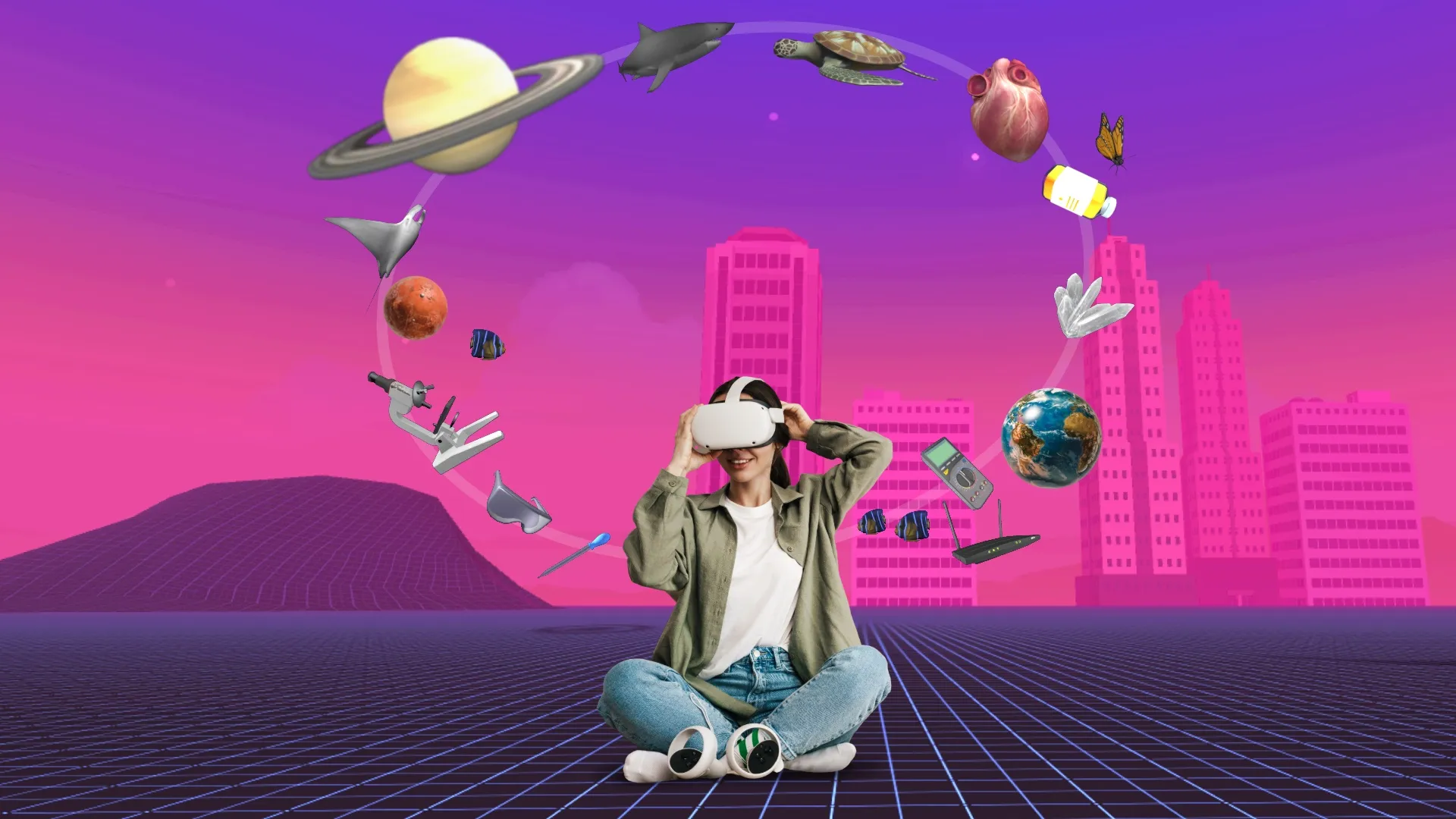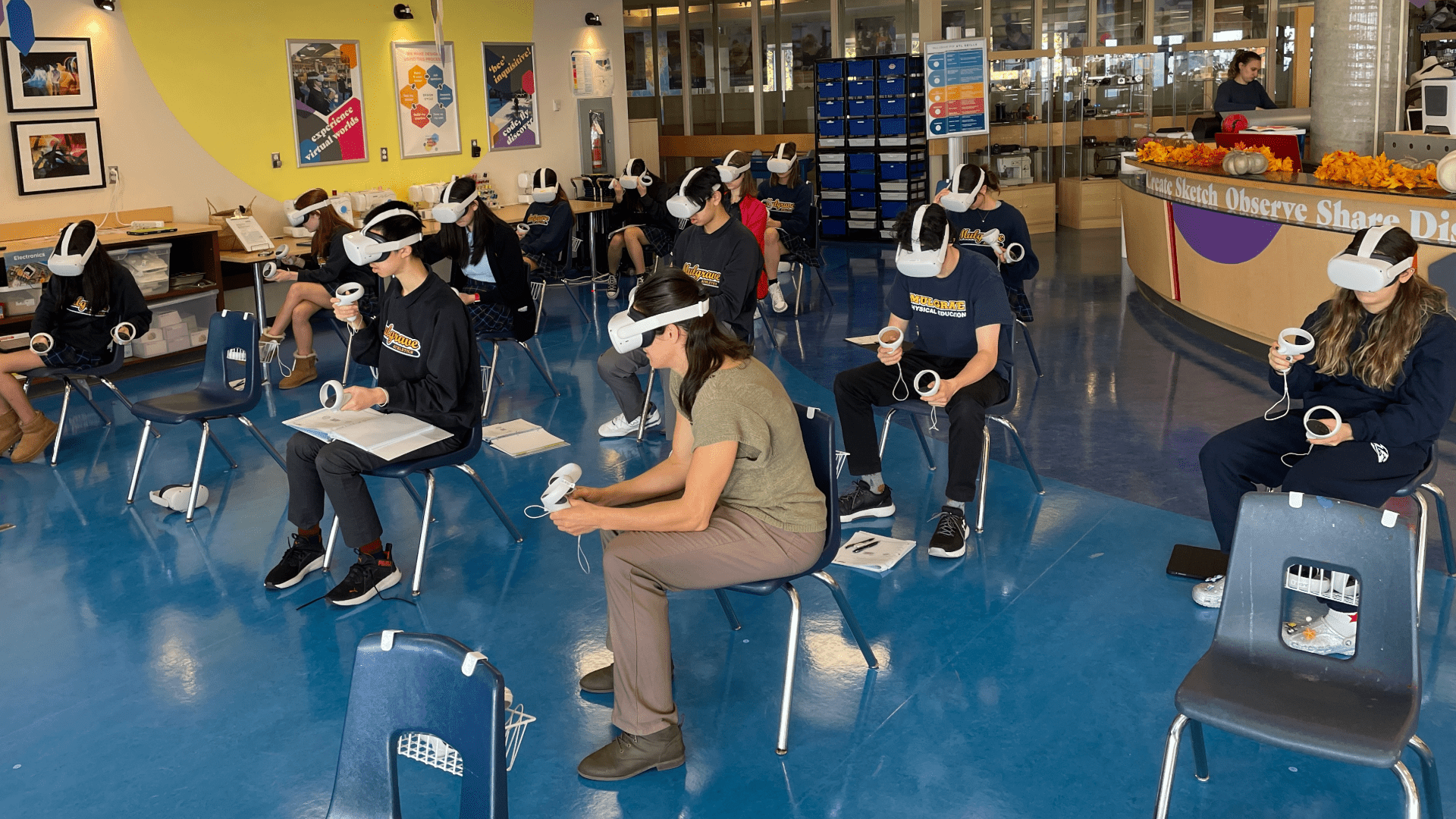
What's the difference between students exploring new worlds and creating them? At the heart of Zoe Immersive's Virtual Reality (VR) is an idea that stretches beyond discovering new realities. It's about giving students the chance to make their own universes. And there is a profound power in that: giving students the tools to forge something uniquely theirs. In a world where schedules and routines often predetermine much of their lives, the freedom to construct a space of their choosing amplifies student confidence, engagement, and learning.
How can the traditional teaching model limit student learning time?
Traditional teaching often follows a structured path of I do, we do, you do. Most lessons include a gradual release of instruction:
- Pre-teach and frontload vocabulary and concepts.
- Lead a mini-lesson targeting specific learning objectives.
- Let students apply these concepts in groups and individually.
The process typically wraps up with a closure or brief assessment. But how much of this instruction is truly student-led? The reality is that teacher-led activities, like instruction, housekeeping items, and behavior monitoring, monopolize instructional time far more than actual student learning. If the true goal of education is learning, shouldn't the balance tip more toward application and creation?

How to Shift Classroom Dynamics with VR Learning
If education is a system, then VR learning shakes up the traditional instructional model. How? By giving students more time to create and teachers more time to facilitate. Integrating VR into the classroom enables a recalibration of instructional time. It sets a new standard that prioritizes active creation over passive consumption. And since students are naturally digitally inclined, the learning curve is much more seamless for them than for teachers. This means even if teachers are new to VR learning, they don't have to be experts before their students.
In fact, teachers who learn VR alongside their students demonstrate the very facet of learning new skills and creating new things. Students see their teachers as fellow pursuers of knowledge, especially when they explore new technologies like VR together. This dynamic changes the traditional teacher-student relationship into a collaborative learning partnership. Because both parties navigate the intricacies of VR, this joint learning experience democratizes the educational process by creating something new together. In this setting, teachers model lifelong learning and show that education is a continuous path of discovery and adaptation.
What happens when students create? How VR learning builds more than confidence.
Culminating unit projects push students to synthesize and apply what they've learned by stepping into the creator's role. This involvement encourages engagement with the material on a much deeper level. VR takes this concept further by offering students depth and a multidimensional space to explore and create. This section highlights how VR facilitates a profound interaction with concepts and empowers students to construct virtual worlds that mirror their own realities, interests, and goals.
EpiPen Training: A Virtual Lifesaver
The Bayha Group is a dedicated organization that creates equal opportunities for underprivileged youth in California. They launched an innovative summer internship program called "WorkWonder" in collaboration with Zoe Immersive. Through this partnership, students used VR to apply their creativity and tech skills to meaningful projects.
For students with severe food allergies, everyday life can pose significant risks, making emergency response education important. One student intern developed a VR simulation that guides users through the correct usage of an EpiPen in emergency scenarios. This wasn't just an informative re-enactment for this student; her created world matched her real-life experiences, giving her more than confidence. VR technology instills a deep sense of autonomy and leadership. It turns students into proactive participants in their own lives and the lives of others.
Climate Action Through Virtual Worlds
Two students built a VR experience to fight the climate crisis. Their virtual world illustrates individual actions to support green businesses and promote clean energy. Users navigate a neighborhood impacted by climate change and interact with elements to stress both the harmful effects of environmental neglect and the benefits of sustainable practices. During this project, students engaged with UN representatives about the economic aspects of solar energy. These interactions increased students' empathy. Their research and discussions helped them to understand climate change's immediate and tangible effects on natural disasters and poorer communities. The project exemplified how collaborative, hands-on learning can lead to insights and real-world applications.
Steezy: A Virtual Skateboarding Coach
Another example of student creativity and confidence in VR comes from Gianna, who developed an immersive world named "Steezy." This VR experience is designed to support aspiring skateboarders in learning and mastering skateboarding tricks, such as landing a kickflip.
Steezy integrates users' precise measurements and provides feedback based on performance. As students attempt tricks in this virtual skate park, the system analyzes their movements and provides real-time, actionable feedback.
The project does more than just teach skateboarding—it encapsulates what personalized learning should be. It shows the potential of VR to take any passion—be it skateboarding or science—and turn it into a dynamic learning experience that caters to individual learning styles and speeds. VR learning proves that when students apply their creativity and technical skills to projects they're passionate about, they expand the boundaries of what’s possible.

What are the broader implications of VR learning?
VR in classroom settings has been shown to significantly improve student engagement across cognitive, behavioral, and affective dimensions. The immersive aspects of VR get students deeply into the material, allowing them to display increased attention, comprehension, and retention. Their behavioral engagement manifests through consistent participation in learning activities. There's nowhere to hide in virtual worlds, and when students are the ones making their world, they're driven by the immersive and interactive nature of VR. In terms of student affect, VR stimulates students' emotions and motivation. In other words, VR gets students excited to connect to the learning material.
Research also indicates that immersive VR experiences promote a deeper understanding of complex and abstract concepts. This type of learning encourages self-directed inquiry and moves away from traditional, teacher-centered instruction. This aligns well with modern pedagogical approaches because the emphasis is on student agency and active learning.
VR Learning fosters courage: Zoe Immersive makes confident learners
What would happen if your district was full of confident learners?
Zoe Immersive is more than a tech tool; it's a gateway to courage through creativity. Students who construct their own worlds open up a universe of possibilities where learning is active, the making is dynamic, and the experience is profoundly personal.


